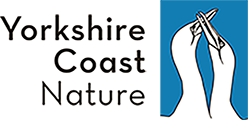The Goshawk. Power, Grace and Beauty!
No matter how many times I see a 'Gos' I feel privileged, excited and always have the same wow factor! writes YCN's Richard Baines. The Northern Goshawk is power, grace and beauty; evolution perfected over millions of years. Alert and in total control in their deep forest habitat, they are always one step ahead of a threat and never easy to see.
Hunting is swift and aggressive in short bursts of attack from hidden flight or perch, using a strategy of stealth and surprise. With a large difference in the size of the sexes, this affects the size of their prey. A study in Europe found the female prey size averaging up to 505 g and the male 277 g. They have a varied diet, taking mammals and birds from Pheasant and crows to squirrel and Hare. In Yorkshire Grey Squirrel has been regularly found as a food item, a natural control on this non-native mammal.
The North York Moors National Park and the Great Yorkshire Forest is one of the best places in the UK to see this wonderful bird. The huge size of the female, almost as big as a Common Buzzard, makes her more straightforward to identify. The male however is not much larger than a female Sparrowhawk. They both show a series of unique features visible on these images.
- Shorter tail than Sparrowhawk, creating a more compact shape, shown well on image 5.
- A wider wing-base than Sparrowhawk with a noticeable bulge on the hind wing/secondaries, shown on image 1 and 5. Sparrowhawks almost always look narrow-winged by comparison
- In profile they have a much deeper belly than Sparrowhawk - look at that belly on image 1!
- The 'hand' or primaries often appear narrow in comparison to the rest of the bulky wings, creating an almost Peregrine-like shape, shown well on image 6.
We can be very proud we have a large forest on our doorstep in Yorkshire with a functioning ecosystem. From Goshawk at the top of the food chain to tiny lichens at the base, everything benefits.
To ensure the future for these amazing birds is secure, we all have to contribute. Yorkshire Coast Nature supports the work of the RSPB as Corporate Members. We work in close co-operation with their staff to ensure our National Park Safari Tours are conducted responsibly and to the benefit of these specially protected birds. We believe strongly in helping as much as we can and these birds really do need our help, as the RSPB's Mark Thomas explains below:
'Goshawks are special birds, they are huge and powerful yet shy and secretive but if you are lucky enough to see one they leave you in awe. Sadly not everyone shares that majority view; Goshawks have been subject to widespread illegal persecution for decades, including trapping, poisoning, nest destruction and shooting.'
Despite recent RSPB and police investigations that have resulted in successful prosecutions of gamekeepers, persecution has been so detrimental that the species is on the verge of local extinction in places like the Peak District National Park. Image 7 shows four dead Goshawks and a Buzzard - found illegally poisoned in Devon in March 2011.



 Back to Blog
Back to Blog

